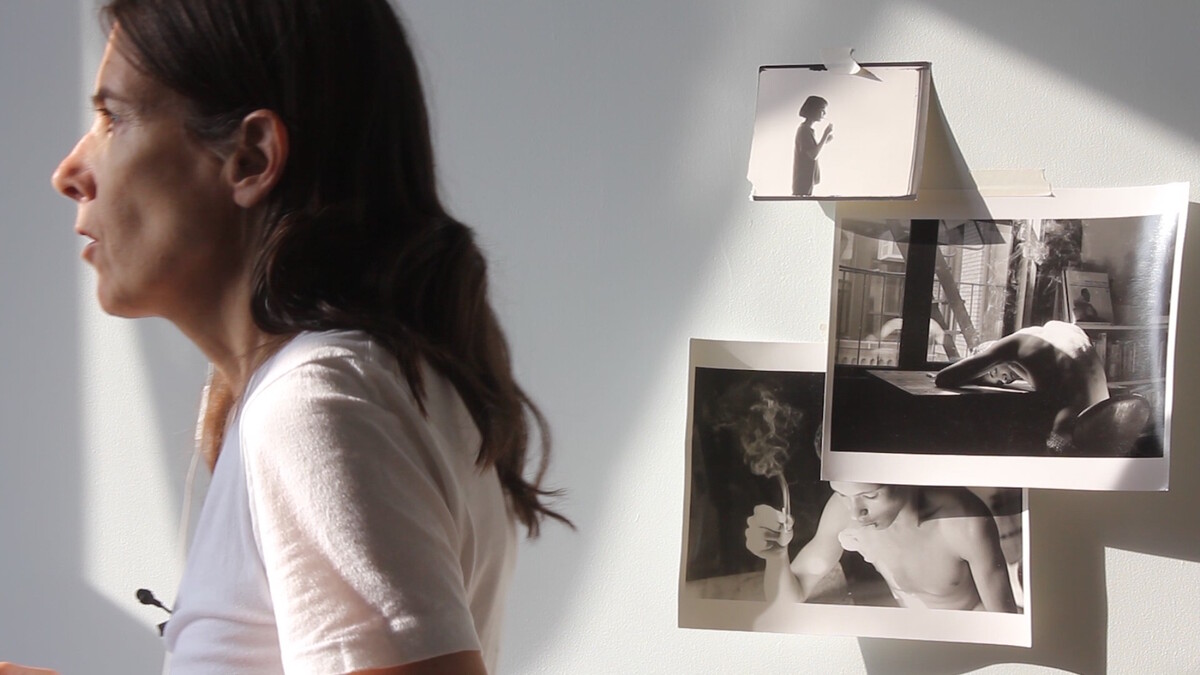During the lockdown, I found solace in books that took me to places beyond my reach. I visited the atemporal lands of the Kesh civilization, brought to life by Ursula K. Le Guin in Always Coming Home (1985); I discovered the outlandish urban bestiary of Shaun Tan’s Tales from the Inner City (2018); I fled to that ancient epoch when animals were gods and humans were animals which Roberto Calasso describes in The Celestial Hunter (2016). In between, I compulsively watched the animal videos posted by the Canadian-born, New York-based artist Moyra Davey on her Instagram feed.
Between March and May, Davey filmed a photogenic bird feeder, an aquamarine box that looked like a vintage television monitor attached to a tree branch, through the lens of a telescope. First came the birds: blackcaps, blue jays, coal tits, goldfinches, and other, less familiar North American passerines. Next came the wild turkeys, then a family of black bears, a mother and two cubs playing in Davey’s porch and on the screen right before my eyes. These snippets made my silent spring. So when Davey’s Index Cards—a compilation of essays written between 2003 and 2019, collected by Nicolas Linnert and published by Fitzcarraldo Editions1—finally reached my mailbox, it felt like a much-awaited meeting with the master of ceremonies of this parade of unruly creatures. The telescope was turned around, and Davey herself appeared: as when I was following the artist’s online activity, reading Index Cards gave me a feeling of peeking into her private life that I found as irresistible as it was uncomfortable.
Index Cards is a brief anthology of Davey’s thoughts on reading, writing, and photography, interlaced with existential questions. As a whole, the book allows for disparate texts to talk to one another, and for connections to emerge between Davey’s diverse concerns, even obsessions. It is testament to the complementary nature of the various elements of her practice: many of her texts concern photography and film, while many of her photographs and films involve writing and reading. She writes as if there were no flesh between her mind and her hand, and reading her feels like chatting to a longtime friend, the conversation switching organically from maternity to literature simply because you have discussed these subjects so many times before. She is also capable of distilling familiar feelings, as in this description of her relationship to reading: “I spend most of my time trolling through a half a dozen or so books, all the while imagining there’s another one out there I should be reading instead, if I could only just put my finger on it.”
This simple, diaristic manner allows Davey’s erudition to emerge. She thinks through and with her many artistic and literary referents, generously making space in her writing for the voices and ideas of others. At times, however, I wanted to read her own take on fear, sleeplessness, reading, illness, photography, and identity, beyond those of the company she keeps: Virginia Woolf and Walter Benjamin (who, she points out, committed suicide within six months of each other); Susan Sontag, Janet Malcolm, and Roland Barthes (“For Sontag and Malcolm accident is the vitality of the snapshot […] For Barthes accident is wholly subjective”); or James Baldwin (“Baldwin was accused of affecting a British accent when he debated […] at Cambridge University”).
Her own, original thoughts and ideas are to be found in the way she juxtaposes images and texts in her videos, three of whose scripts (Les Goddesses, 2011; Hemlock Forest, 2016; and Wedding Loop, 2017) are included in the book. In them, Davey speaks her own texts while listening through headphones to a previous recording she has made of them. This process recalls Nancy Holt and Richard Serra’s camera performance Boomerang (1974), in which Holt talks over her own words. Holt described the experience as annihilating: “I have the feeling that I am not where I am […] I feel that this place is removed from reality […] I am throwing things out in the world and they are boomeranging back […] I am surrounded by me and my mind surrounds me.” Davey does not comment on her own process of mise en abyme. Yet for such an inspired writer, she is a terrible reader. In the videos, her voice is rigid, tentative and fragile; she often corrects herself, her sentences are enunciated with effort, simultaneously moving and painful to listen to. For those familiar with these works, the unique cadence of her voice will shape the experience of reading this book.
By including these scripts, Index Cards creates its own boomerang effect. It operates in the zone between the screen and the page, between writing, reading, and listening. As I read Davey’s texts, her hesitant voice emerges through me. The feeling of intrusion and indiscretion is complete.
In the US, the book is published by New Directions.

